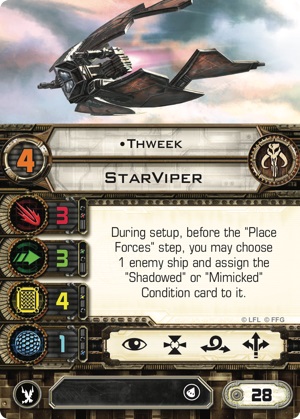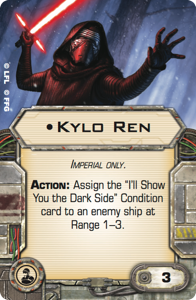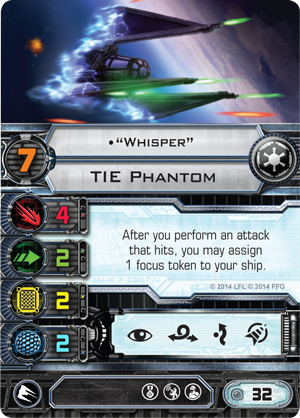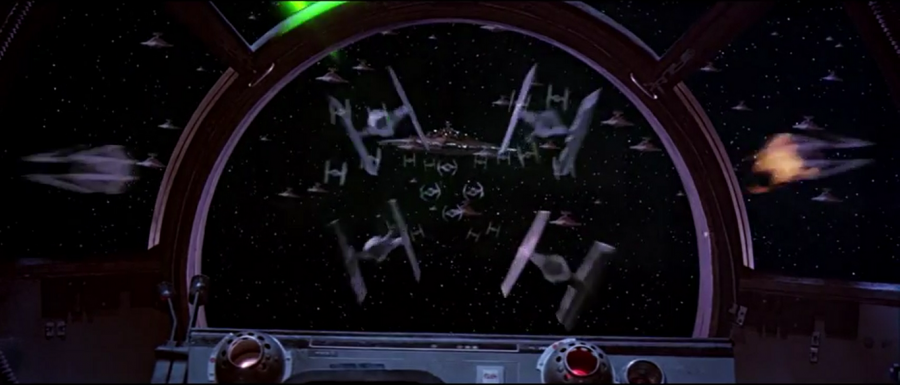X-Wing: Another Look at Initiative
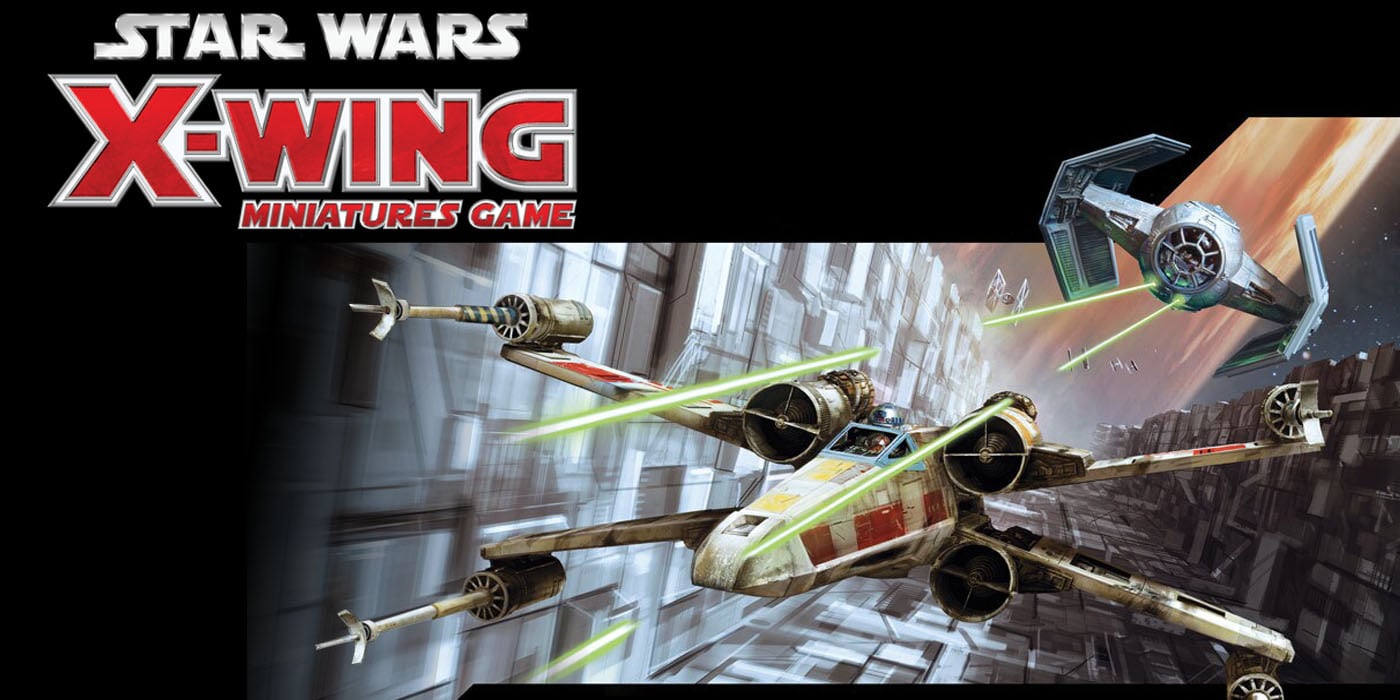
Initiative can be a stumbling block for X-Wing players, both new and experienced. Let’s take a closer look.As always, all cards referenced can be found on Yet Another Squad Builder.
Understanding Initiative
One of X-Wing’s virtues as a game is the intuitive nature of its rules and mechanics. By contrast, initiative is rather more opaque. Not only does the rule run counter to the grain of the rest of the ruleset, but it can be difficult to puzzle out how and when to make a big deal about it. That doesn’t mean we should ignore the idea– no. It just means we need to expend a little more skull sweat on the subject to understand how to bend it our way.
The basic thing to remember is that the player with initiative goes first in all timing conflicts. Whenever ships are at the same pilot skill, or have effects that trigger off the same event, the player with initiative goes first. This is part of what makes it tricky to grapple with, because it works differently than a normal pilot skill advantage. When you’re higher PS, you move second but shoot first (or vice versa); with initiative, you move first and shoot first (or second/second).
The other key tricky thing to remember is that the “Imperials have initiative” rule is only for the basic game. Once you’re using the squad building rules, initiative is determined by bidding and/or a roll-off. The player who spends the fewest points can choose whether to take initiative or pass initiative to his opponent. If points totals are equal, choose randomly.
In squad-building parlance, the number of points you spend below the limit is your “bid”. For example, in a typical 100 point list, a player who came in with a 97-point squad would have a three-point initiative bid.
Why should we care, though? What good is an initiative bid? Shouldn’t we be spending every single point available because those points give us more goodies and better pilots? On the contrary, certain types of lists and pilots care a great deal about initiative. It matters most when it comes to moving last; it can come into play with shooting first; and occasionally it matters for game effects and obstacle deployment.
Moving Last
The later you go in the activation order, the more of the picture you have, and the easier it is to react and arc-dodge. This has been the bread and butter of high-PS arc dodgers for years, and is the reason PS is so valuable for that class of ship. The tricky thing is, what if both players are running high-PS arc dodgers? What if you have a matchup of, say, Soontir Fel against Kylo Ren? Both of those pilots desperately want to see where the other guy is going to be so that they can wriggle away. Both are PS9; neither can spare their EPT slot to chase a higher Pilot Skill. Even if they can’t beat 10s or 11s, they can beat other 9s if they can force the enemy to have initiative. For arc dodging purposes, even skill and giving the other guy initiative is as good as being higher PS. This is why you rarely see arc dodgers flown without some kind of initiative bid.
Thweek is the patron saint of this approach. Even with its new, lower cost, the StarViper is flown far more profitably as an arc dodger than a jouster. Thweek, however, will never outright beat the PS of his enemies. To the contrary, he matches the highest PS ship on the enemy side. However, he can still derive all the arc-dodgy benefits of higher PS if the enemy has initiative.
Moving last is beneficial to ordnance launchers, too. In the initial approach, it is commonly the case that the first player to move is out of range to acquire a lock, but the second person can get them. In an even PS engagement, then, initiative can be the difference between firing primary weapons at range three (boo!) or torpedoes and missiles (yay!).
Shooting First
Shooting first with superior PS is a clear-cut Good Thing: dead enemies can’t shoot back. Unfortunately, in X-Wing, dead enemies can shoot back at even PS thanks to the Simultaneous Attack rule. So what good is shooting first?
Speaking broadly, it’s not a good thing… unless you’re one of those pilots that can abuse that fact. Kylo-RAC (Read Admiral Chiraneau with Kylo Ren crew) is Exhibit A. One of Kylo’s rudest uses is to fish a Blinded Pilot crit out of the damage deck and apply it with Chiraneau’s pilot ability to force crits. This allows you to “interrupt” an enemy’s attacks, denying them a shot during a critical early engagement. With initiative, you can do that against other PS10 types, as well as anyone lower PS than you.
Whisper is Exhibit B for caring about shooting first. Sure, sure, Whisper loves to arc-dodge, and can do it with the best of them. That leaves her helpless, however, against turret-equipped high-PS ships that have no arc to dodge. Against such foes, Whisper desperately wants to shoot first so that she can get a focus token and use Advanced Cloaking Device to get back under cloak. Shooting first, in other words, can be the difference between defending against Fat Han with four greens and a focus, and defending against him with two greens and no tokens. That’s… a big difference.
We can use Whisper to illustrate our third point, as well:
Game Mechanics
Whisper players sometimes bring along Gunner to ensure they can land a hit. Gunner’s ability triggers after the first attack misses (Step 8 of the timing chart, if we’re being specific). Guess who else has an ability that triggers during that time period?
Dengar.
So let’s say Whisper shoots Dengar and misses. Both Gunner and Dengar’s ability proc off of the attack. Whisper had better hope she has initiative and can get her re-attack before Dengar gets to shoot. If she doesn’t, Dengar’s revenge attack is a lethal threat to her while she’s de-cloaked and vulnerable.
There are other examples of timing conflicts of this type, but they are thankfully a lot less common than our first two reasons to care about initiative. More to the point, because these conflicts are rare (certainly less common than having opposing ships of equal PS), it’s rarely wise to bid for initiative solely for this reason.
Putting It All Together
By examining the difference initiative makes in certain circumstances, we’ve gotten a pretty clear picture of where initiative matters. This illustrates pretty clearly when you should make a bid.
Say you’re running a TIE swarm. You aren’t arc-dodging, you’re content with simultaneous attack (if you’re even that lucky), and you don’t have much in the way of abilities. In sum, initiative doesn’t mean much to you. You’re self-evidently better off spending your full allotment of points.
If those conditions don’t apply, then whether or not you make a bid– and the size of that bid– depends strongly on current conditions. There was a time not long ago when lists running PS8 ships could seriously contemplate initiative bids. In current conditions, anything at PS8 is more likely to be trumped outright, so there’s a lot less value in controlling initiative for the sake of a PS8 pilot. On the other hand, when Contracted Scouts were pervasive, some too-clever-by-half players took PS3 pilots and initiative in order to land blocks.
If you’re not one of those edge cases that cares about initiative for a non-arc-dodging reason, treat initiative as an extension of the PS bid process. In the same way that you contemplate running VI or Adaptability to get the PS edge, contemplate the size of your bid based on the lists you’re likely to face and are most afraid of. If you’re just not that scared of losing out on PS, you probably won’t care about initiative either.
~Fly casual


